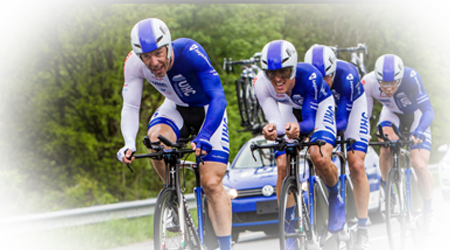There are five dimensions to a lean transformation – purpose, process, people, management behaviors, and mental models – and it is the role of leadership to adjust its stance to each of them.
The adoption of the lean methodology in an organization calls for a number of radical changes, ranging from the way processes are run to the way people interact. As the driver of a transformation, it is a leader’s responsibility to develop an ability to influence the mindsets and attitudes that will make change possible.
This becomes particularly evident when, for instance, leadership shows dissatisfaction with the speed of a transformation or with the volatility of results, normally blaming the team for its lack of engagement and discipline.
When analyzing the root-causes of that disappointment, however, many of these leaders are faced with a rather different reality: they are the problem. While processes and work systems have begun to change, they have simply lagged behind and continued to adopt traditional management behaviors.
Upon realizing this, certain leaders understand they need to change their style of management and find a way to spread the new behaviors and practices across the entire “chain of command”: president-directors-managers-team leaders.
Change, however, is easier said than done. The first questions many of them might ask are, “In what way should we change?” or “What are the characteristics of a lean leader?”
There is no simple answer to this question, but our experience helping leaders reflect on their roles – coupled with the lessons we can draw from the Lean Transformation Framework – can perhaps support our analysis.
So, let’s start by reminding ourselves of the five dimensions of a lean transformation:
- Purpose
- Processes
- Leadership and management system
- People development
- Mental models
For each of these dimensions, we can identify a number of ideal leadership behaviors that, if adopted, can truly support the lean transformation.
PURPOSE – CREATING ALIGNMENT AROUND CHALLENGING GOALS
Lean change requires people to get out of their comfort zone. For this to occur, there must be a clear purpose for them to work towards. Creating alignment around this future situation is the prerogative of the leader, who has to clearly define and communicate the needs of the business, the problems that need solving, the deployment of objectives, and of course a timeline for their achievement.
It all starts with a clear definition of the performance gap you want to fill. What we have learned is that if you seek moderate improvements that don’t go past the company’s immediate competitiveness issues, people will likely believe that doing more of the same will be enough. A true lean transformation is driven by challenging goals, which translate the company’s strategic direction into meaningful objectives that motivate people to find different ways of thinking and working.
This means creating a shared vision of the future state we want to achieve as an organization.
PROCESSES: DESIGNING VALUE CREATION
Good processes tend to generate good results, which means an organization on the lean journey should be strongly focused on designing and supporting processes that actually create value for the customer. This, however, is only possible if leadership knows and understands lean principles and tools, as well as the company’s processes.
Sadly, many leaders still believe that lean as a practice is merely operational and that senior managers only need to have a superficial understanding of how it works. But it was proved long ago that lean is a business-wide management system of strategic important for an organization, and that every leader must learn its concepts and tools, and, beyond that, their connection to customer needs.
In this sense, the first and most critical decision a leader should make is to acknowledge with humility his or her need to learn, followed by a commitment to deepen their understanding of the lean management system and its applications across the business.
In time, this will allow leadership to spearhead the complete redesign of a company’s value streams, eliminating organizational silos and therefore allowing for value to flow towards the customers more quickly and with less waste generated.
MANAGEMENT SYSTEMS AND LEADERSHIP STYLES: PRACTICING THE GEMBA ATTITUDE
In a lean transformation, management processes need be redesigned so that they will support value creation. Detecting variation using PowerPoint presentations during endless meetings at the end of the month, for instance, is totally incompatible with lean. A lean leader acts in a completely different way, interacting with people in their workplace and developing a “gemba attitude”: when facing a problem, he or she goes see, asks why, and shows respect.
There are several lean practices supporting this approach: hoshin objectives are deployed to work cells and variation is visually identified and dealt with rapidly by teams using a daily management system. Critically, managers support problem solving and protect flow by routinely interacting with teams and using methods like help chain, gemba walks and leadership standard work.
We mentioned attitude, and this is indeed the biggest change necessary. Leadership must transform the way they interact with teams: it’s neither the traditional “do it my way” not the rather anarchical “do it your way” – instead, as John Shook teaches us, leadership should embrace a “follow me” style based on asking questions.
DEVELOPING PROBLEM SOLVERS
Problem solving based on the scientific approach is the essence of lean thinking, and developing all members of the team to become problem solvers should be the main task of a lean leader. In a lean environment, the leader acts as a coach who continuously develops the problem solving skills of his people.
One of the most important skills to nurture is, without a doubt, the ability to ask the right questions instead of providing solutions. This process encourages people to think, understand the situation and its underlying causes, establish effective countermeasures, and assume responsibility.
It goes without saying that a leader, too, must be able to effectively solve problems. As everything in lean, this is a skill that can only be learned by doing, solving multiple problems – simple as well as complex, operational as well as strategic – and practicing the scientific method.
Traditionally, people tend to solve problems by jumping to solutions without having properly analyzed the problem at hand. This is why in lean we use A3 thinking, which effectively supports the development of PDCA problem solving skills in leaders.
MENTAL MODEL – BEING AN EXAMPLE
Fundamentally, lean is about changing mindsets. No sentence holds more truth than “Everybody in a company behaves the way their leader does” – indeed, people observe and follow actions, not words. This makes it necessary for a leader to change his or her company’s mental models through leading by example.
Being present at the gemba, asking the right questions and showing interest in the teams’ work can have a very positive impact on people’s behaviors and thinking. The opposite, however, is also true: a leader’s attitude that is incoherent with lean principles can have a destructive effect, supporting the idea that all this “lean talk” is not to be taken seriously.
TO SUMMARIZE
Let’s quickly recap what we have said so far. For each of the five dimensions of a transformation, a leader should:
- Create alignment around challenging goals;
- Commit to learning lean in order to support the design of solid processes;
- Adopt a “gemba attitude” based on go see, ask why and showing respect;
- Develop an army of problem solvers;
- And be an example for the rest of the organization to really change mindsets.
These, in my opinion, are the most important aspects of lean leadership. I recognize, however, that because each company is different, each leader should adapt his or her approach to lean to fit the company’s needs and circumstances. Once the gap between current and future state has been identified, a leader can proceed to draw a plan that will ensure the right skills are developed (perhaps with the support of a sensei).
So, if you are a leader in a company that is trying to progress on its lean journey, I encourage you to reflect on the aspects you and the rest of your leadership team need to work on in order to effectively support the transformation you have started.
Words: Flávio Picchi, Vice President, Lean Institute Brasil




